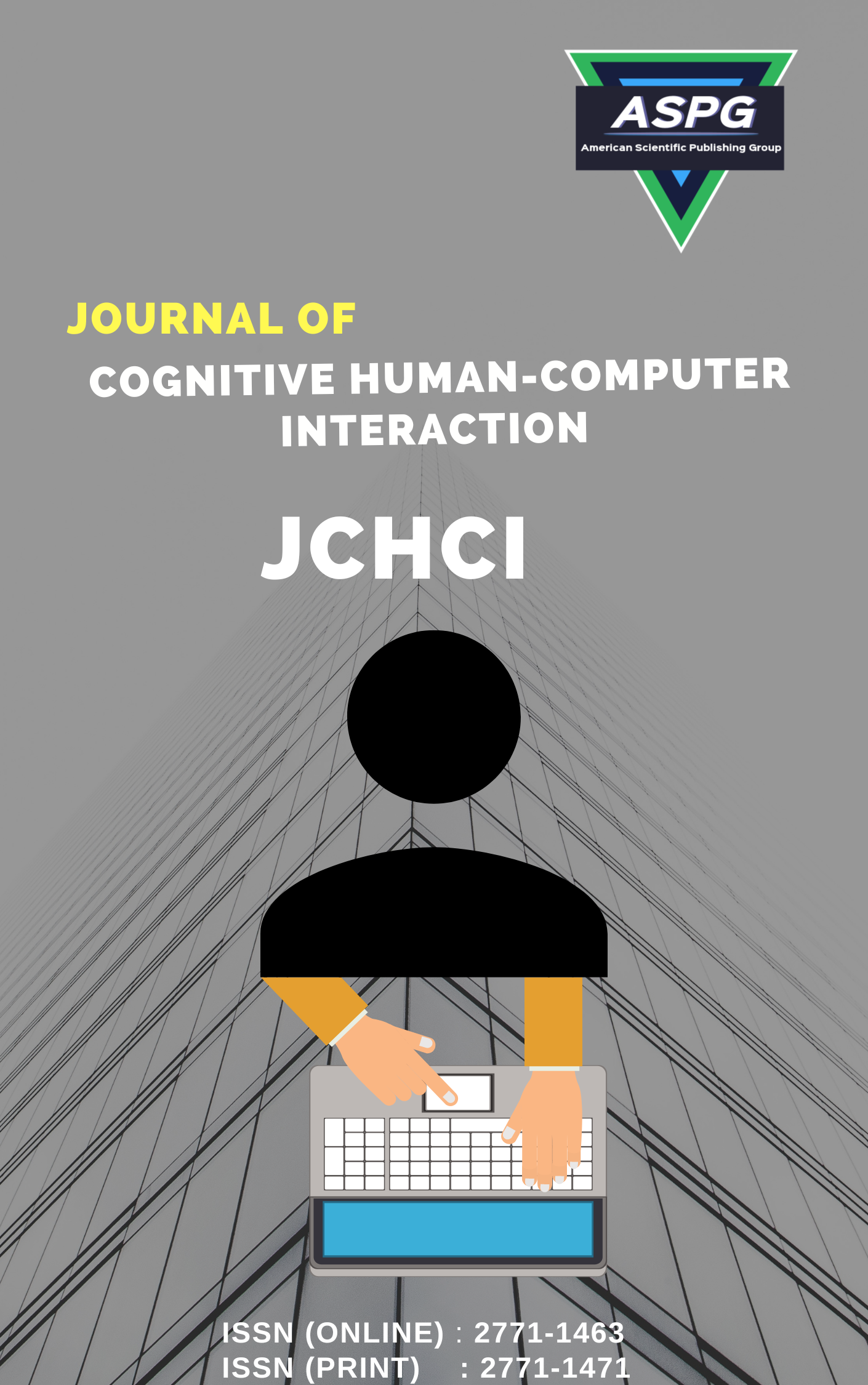

Volume 7 , Issue 2 , PP: 08-16, 2024 | Cite this article as | XML | Html | PDF | Full Length Article
Irfan Rajab Bhat 1 * , M. Arif Wani 2
Doi: https://doi.org/10.54216/JCHCI.070201
Cardiovascular disease has been the major cause of mortality worldwide for last several decades. Diagnosis of heart disease through traditional approaches is a complex, time consuming and error prone process. To address this issue, several techniques have been proposed to automate the process of diagnosing the heart disease accurately in timely manner. However these techniques report limited accuracy of diagnosing the disease. In this paper SAFARI algorithm is used to diagnose the heart disease. Safari uses rule based approach i.e. it extracts rules from a dataset and uses the extracted rules for diagnosis. The various attribute values are first discretised into specific ranges, each range corresponds to a symbol. This results in a symbol table. Safari extracts rules from this symbol table. The approach has been thoroughly tested on the heart disease dataset publicly available on UCI machine learning repository. The results obtained using this approach are compared with the results of various techniques reported by other authors, a significant improvement was observed.
Safari , discretization , rule induction , decision tree , symbols.
[1] M. A. Wani, “SAFARI: A Structured Approach for Automatic Rule Induction”, IEEE TRANSACTIONS ON SYSTEMS, MAN, AND CYBERNETICS, vol-31 August (2001),pp 650- 655.
[2] Chaimaa Boukhatem, Heba Yahia Yousef, Ali Bou Nassif, Heart disease prediction using machine learning, Advances in science and Engineering technology International Conference, pp 1-3 (2022),DOI:10.1109/ASET53988.2022.9734880
[3] Gande Akhila,Hemachandran K,Juan R Jaramillo. "Indian Premier League Using Different Aspects of Machine Learning Algorithms." Journal of Cognitive Human-Computer Interaction, Vol. 1, No. 1, 2021 ,PP. 01-07.
[4] A.F.Oroom, E.E.Abdallah, Y.Kilawi, A.Kafaye and M.Ashour, “Effective diagnosis and monitoring of heart disease”, International journal of software engineering and its application (2015), pp 143-146.
[5] Madhumita Pal, Smita Parija Prediction of heart disease using random forest, Journal Of Physics(2021), pp 2-9.
[6] Ashok Kumar M ,Abirami A,Sindhu P,Ashok Kumar V D ,Rani V. "Modern Medical Innovation on the Preferred Information about the Medicine using AI Technique." Journal of Cognitive Human-Computer Interaction, Vol. 1, No. 1, 2021 ,PP. 8-17.
[7] P.K.Anooj “Clinical decision support system: Risk level prediction of heart disease using weighted fuzzy rules”, Journal of King Saud University-Computer and Information sciences,(2011), pp 27-38.
[8] Heart disease identification using Machine learning classification in E-health care ,IEEE Access, pp 107562-107565.
[9] Shruti patil, Mrunal Annadate, Implementation of machine learning model to predict heart problem, International Journal of Recent Technology and engineering(IJRTE), volume-10, pp 117-118.
[10] Mrs.K.Kiruthika,Ms.S.Gayathri,Ms.R.Hemalatha,Ms.P.Menaga. "Design and Development of Mobile Healthcare Application for “Ayurvedic” based Clinical Documents." Journal of Cognitive Human- Computer Interaction, Vol. 1, No. 1, 2021 ,PP. 18-27.
[11] Yingjie Zhang, Lijuan Diao, Linlin Ma ,”Logistic Regression Models in Predicting Heart Disease”, Journal of Physics : Conf. Series,2021, pp 1-4.
[12] Jayshril S. Sonawane, D.R.Patil, “Prediction of heart disease using multilayer perceptron neural network”, international Conference on Information Communication and Embedded Systems,(2014), pp 1-4.
[13] Ajay G,Abhishek Kumar,Venkatesan R. "Query-Based Image Retrieval using Support Vector Machine (SVM)." Journal of Cognitive Human-Computer Interaction, Vol. 1, No. 1, 2021 ,PP. 28-36
[14] Ms. Tejaswini U. Mane “Smart heart disease prediction system using Improved K-Means and ID”, International Conference on Data Management, Analytics and Innovation (ICDMAI),(2017), pp 241-242.
[15] S. Mohan, C. Thirumalai, Gautam Srivastav, Effective heart disease prediction using hybrid machine learning techniques, IEEE Access(2017), pp 2-9.
[16] Norma Latif Fitriyani ,Muhammad Syafrudin ,Ganjar Alfian HDPM: An Effective Heart Disease Prediction Model for a Clinical Decision Support System,2020, IEEE Access, pp- 133034-133036.
[17] N. C. Long, P. Meesad, and H. Unger, ‘‘A highly accurate firefly based algorithm for heart disease prediction,’’ Expert Syst. Appl., vol. 42, no. 21, pp. 8221–8231, Nov. 2015, doi: 10.1016/j.eswa.2015.06.024.
[18] Resul Das, Ibrahim Turkogla, Abdulkadir sengur Effective diagnosis of heart disease through neural networks ensembles (2009), Department of Informatics, Firat University, 23119 Elazig, Turkey Department of Electronics and Computer Science, Firat University, 23119 Elazig, Turkey, pp- 7677-7678..
[19] L. Verma, S. Srivastava, and P. C. Negi, ‘‘A hybrid data mining model to predict coronary artery disease cases using non-invasive clinical data,’’ J. Med. Syst., vol. 40, no. 7, p. 178, Jul. 2016.
[20] U. Haq, J. P. Li, M. H. Memon, S. Nazir, and R. Sun, ‘‘A hybrid intelligent system framework for the prediction of heart disease using machine learning algorithms,’’ Mobile Inf. Syst., vol. 2018, pp. 1–21, Dec. 2018.
[21] S. M. Saqlain, M. Sher, F. A. Shah, I. Khan, M. U. Ashraf, M. Awais, and A. Ghani, ‘‘Fisher score and matthews correlation coefficient-based feature subset selection for heart disease diagnosis using support vector machines,’’ Knowl. Inf. Syst., vol. 58, no. 1, pp. 139–167, Jan. 2019.
[22] Gupta, R. Kumar, H. S. Arora, and B. Raman, ‘‘MIFH: A machine intelligence framework for heart disease diagnosis,’’ IEEE Access (2020), vol. 8, pp. 14659–14674.
[23] Likitha KN, Nethravathi R, Nithyashree K, Ritika Kumari, Sridhar N, Venkateswaran K, Heart Disease Detection using Machine Learning Technique, IEEE Explore.
[24] K. B. Nahato, K. N. Harichandran, and K. Arputharaj, ‘‘Knowledge mining from clinical datasets using rough sets and back propagation neural network,’’ Comput. Math. Methods Med., vol. 2015, pp. 1–13, Mar. 2015.
[25] Mert Ozcan, Serhat Peker, “ A classification and regression tree algorithm for heart disease modeling and prediction”, ELSEVIER, pp 1-6, December 2022,doi:10.1016/j.health.2022.100130.
[26] Srabanti Maji, Srishti Arora, “Decision tree algorithms for prediction of heart disease”(2019) , Springer, pp 451-452, doi:10.1007/978-981-13-0586-3_45.